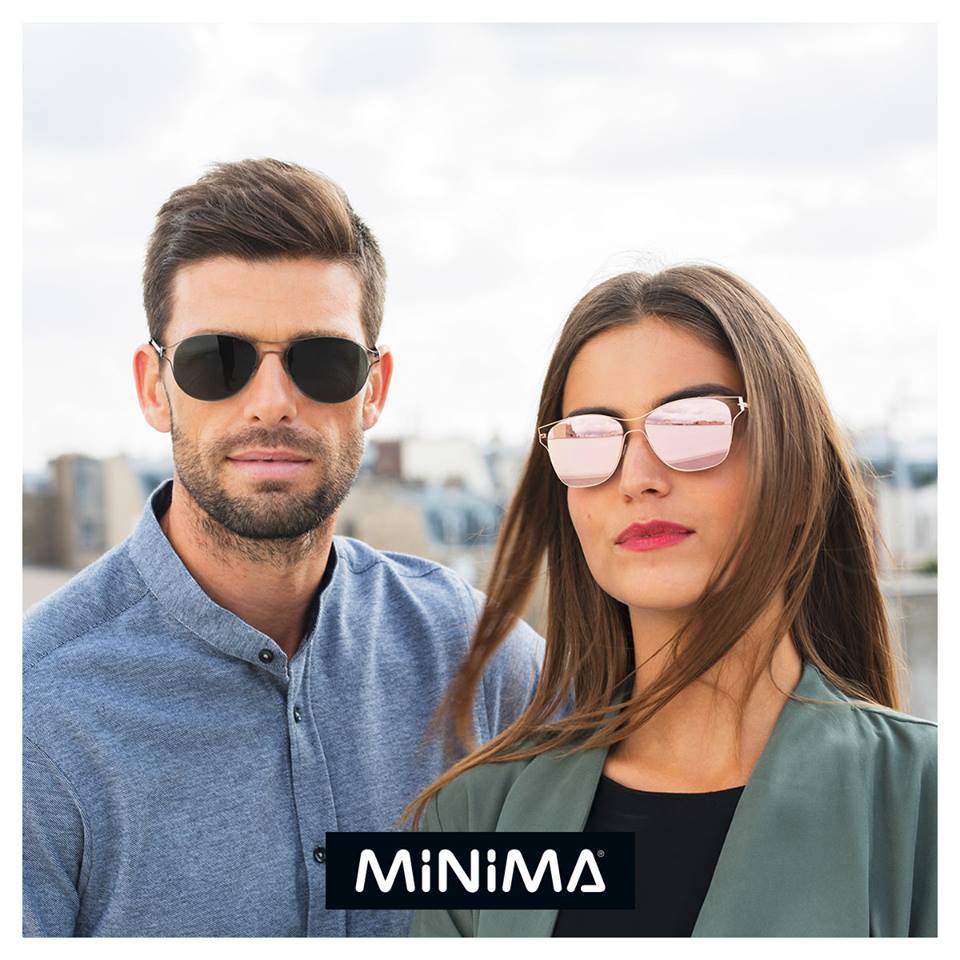
Sunglasses
Although there’s no denying how great you look in that killer pair of shades, There is a real reason to wear them!
Sunglasses do MORE than keep you from squinting. They also protect you from harmful ultraviolet (UV) light, the ultrashort wavelengths of light that cause sunburns, skin damage and melanomas. Studies indicate that long-term exposure to the sun without eye protection can contribute to cataracts, macular degeneration and growths on and within the eyes, including cancer. That’s why Goodrich Optical recommends 100% UV-absorptive sunglasses. We are just as picky about the sunglasses we sell as as we are with our prescription eyewear.

On top of being an awesome fashion accessory, sunglasses protect you from ultraviolet (UV) light, increase optical clarity in bright conditions and reduce the risk of damage to your eyes.
Sunglasses are essential for people exposed to high levels of UV light during activities like snowsports, watersports and driving.
When selecting sunglass lenses, one of the most important things to look for is 100% UV protection. Even though the sun is 93 million miles away, the ultraviolet UV rays it emits can be a factor in causing cataracts, macular degeneration and growths on the eye, including cancer.
There are two types of UV light your eyes (and skin) need protection from:
UVB
These rays are very intense and the primary cause of sunburns and melanoma (cancer), and can be very damaging to the eyes. UVB rays vary in intensity throughout the year and are much stronger in the summer months. Although UVB rays are more intense in the summer, they possess the capacity to burn or damage the skin and eyes year-round, and their effect is amplified by snow and water.
UVA
UVA rays account for 95% of the UV radiation reaching the Earth’s surface. UVA rays do not vary in intensity throughout the year and although they are much less intense, they are 30-50 times more prevalent than UVB. Recent studies indicate UVA can contribute to the development of skin cancer and aging, and are linked to the development of cataracts in the eyes.
Sunglass Lens Materials
Crown Glass
Glass lenses are ground and polished to exacting standards to assure distortion-free vision. Glass lenses are extremely durable and scratch resistant. The primary advantages to glass is it’s high levels of distortion-free vision and scratch resistance. The downside however is that they tend to be more expensive and when impacted, sometimes break, which can be a hazard in active sports.
Polycarbonate
Polycarbonate lenses are made from a similar material to that of aircraft windshields and are virtually indestructible. Polycarbonate is light and scratch resistant (though not scratch proof). They offer an acceptable level of optical clarity, and are far more impact resistant than glass. Polycarbonate is a popular choice for sun wear. One disadvantage of Poly is it’s lower level of scratch resistance. Another is it’s optical clarity which is not as good as other materials.
Trivex/NXT Polyurethane
This lens material is top of the line. It combines the clarity benefits of glass with the lighter weight and impact resistance of polycarbonate. Trivex lenses are an excellent choice for anyone wanting an advanced polymer material with extreme impact resistance, superior optical clarity and ultralight weight.
CR-39 Plastic
CR-39 lenses are the go-to for an inexpensive sunglass solution, and an ideal choice for casual or fashion sunglasses. They retain much of the durability and optical clarity of top-shelf options, but without the high price tag.
Sunglass Lens Enhancements
Polarized Sunglasses Lenses
When light reflects off flat surfaces such as water, snow, glass, sand or pavement it is reflected perpendicular to that surface. This reflective glare is very intense and has the potential to cause increased eye irritation, fatigue and in some cases restricted vision (It’s called Brewster’s Angle for you science folk out there). Polarized lenses, using horizontally-aligned polarizing micro crystals, block all vertical light and protect your eyes from this glare. Polarized lenses are particularly suitable for water sports, cycling and driving where there tends to be a high degree of reflective glare.
Photochromic Tint
Photochromic lenses adjust to changing light conditions to protect you in a wider range of conditions. These lenses will darken darker (to block more light) on bright days, and lighter when conditions get darker. A couple of caveats: The photochromic process doesn’t happen instantly, and it takes longer to work in cold conditions. Also, it doesn’t work at all when you’re inside a car (the change in tint is activated by harmful UVB rays, which don’t penetrate your windshield).
Gradient Sunglasses Lenses
Gradient lenses are tinted from the top down, so that the top of the lens is darkest. These lenses are good for driving, because they shield your eyes from overhead sunlight and allow more light through the bottom half of the lens so you can see your dashboard display clearly.
Double Gradient Sunglasses Lenses
Double gradient refers to lenses that are also tinted from the bottom up: The top and bottom are darkest and the middle has a lighter tint. Double gradient lenses are a great choice if you want sunglasses that aren’t too dark, but shield your eyes well against bright overhead sunlight and light reflecting off sand, water and other reflective surfaces at your feet. These lenses are a good choice for water sports

Contact us
Call us
Visit us anytime
Goodrich Optical, 2450 Delhi Commerce Dr. Holt, MI 48842
Send us an email
About us
Subscribe
Sign up for our newsletter to receive all the latest eye health news as well as offers and discounts from Goodrich Optical.
Copyright © 2023 all rights reserved.
